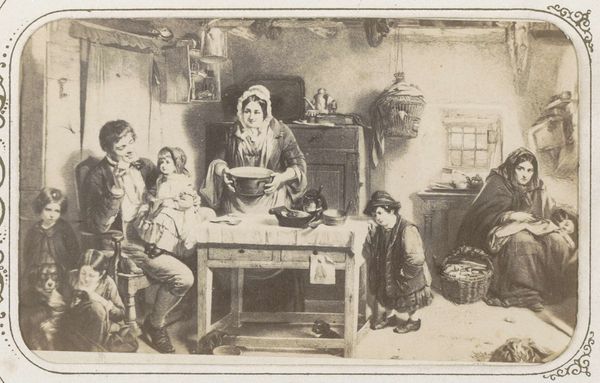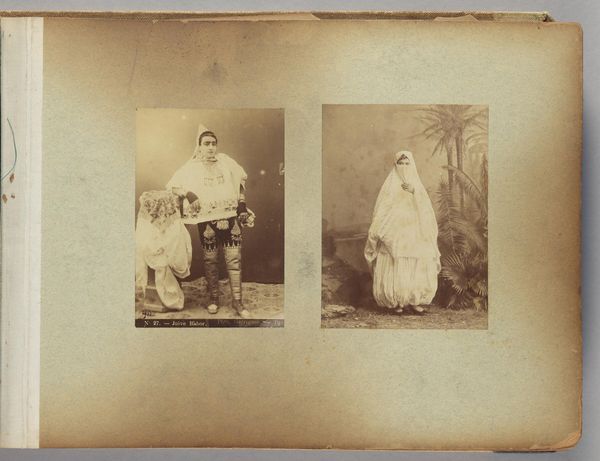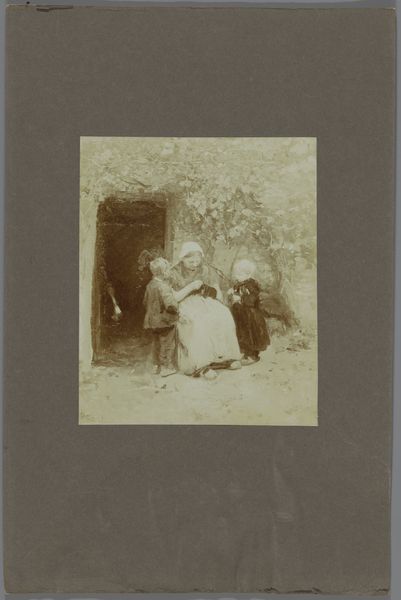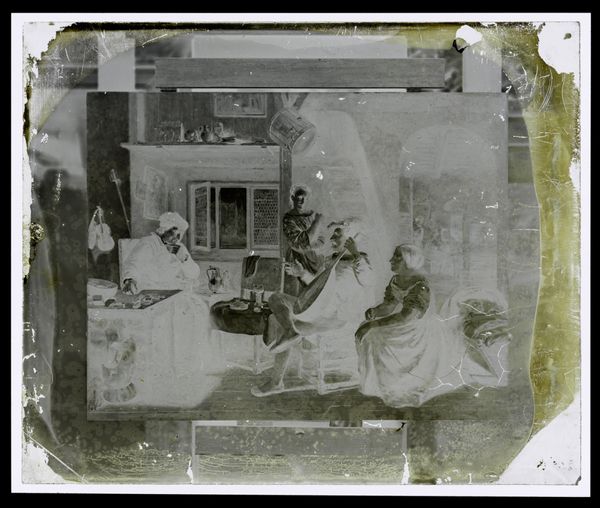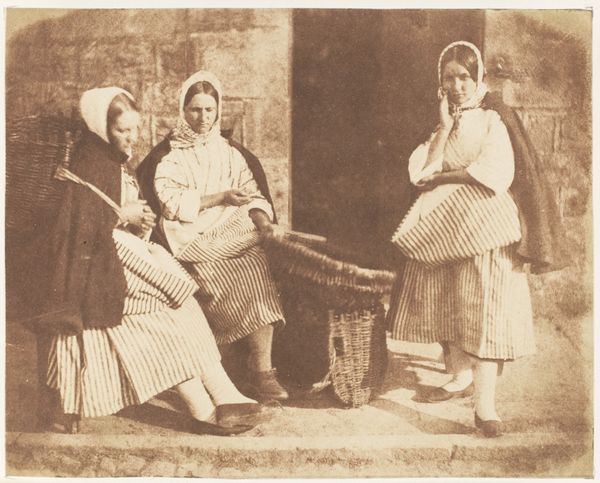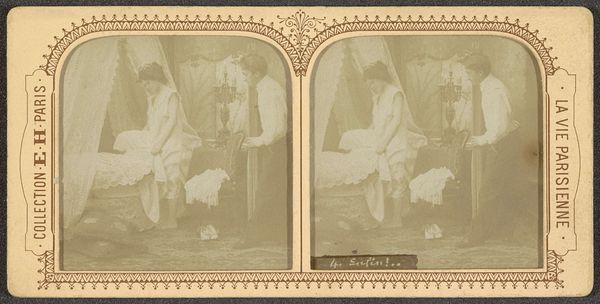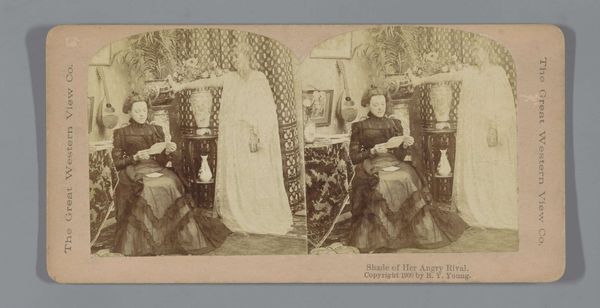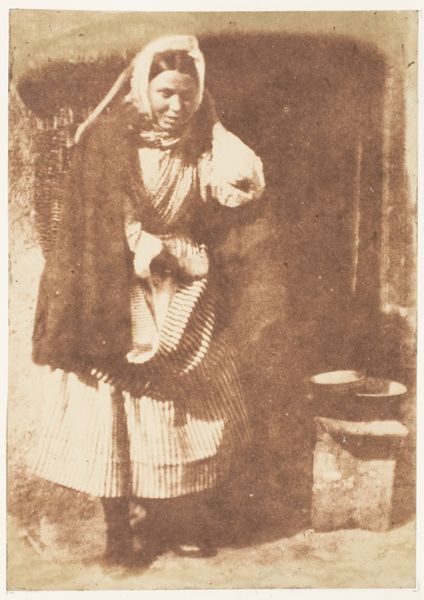
Fotoreproductie van een schilderij door François Lafon, voorstellend Jezus met Maria en Jozef in de timmermanswerkplaats before 1914
0:00
0:00
anonymous
Rijksmuseum
print, photography
#
portrait
# print
#
photography
#
history-painting
Dimensions: height 148 mm, width 204 mm
Copyright: Rijks Museum: Open Domain
Curator: This is a photographic reproduction of a painting by François Lafon, dating from before 1914, depicting Jesus with Mary and Joseph in the carpentry workshop. Editor: It has such a somber feel, doesn't it? The limited tonal range really contributes to this pervasive mood. There's an interesting geometric division too, in the use of architectural planes and the bodies contained within them. Curator: Yes, the artist is really placing these figures in a very deliberate space, emphasizing their roles through positioning. The portrayal of the Holy Family within a humble workshop reflects a broader 19th-century trend of humanizing religious figures, moving away from idealized depictions and embracing a more relatable, earthly context. Editor: You can see how Lafon employed the setting and staging of the characters in a tableau vivant composition, like some form of narrative-centered staging. And also note the halos rendered atop the family; this adds depth to our understanding of their status while framing them, accentuating the composition. Curator: I agree, these haloes, subtly integrated, operate more as signifiers of divinity than grand proclamations of holiness. In doing so, it situates them within a tangible working-class environment. Consider, for instance, how the artist portrays labor, hinting at the dignity found even within the commonplace act of carpentry, subtly referencing Jesus’s own path and origins. Editor: I love how the details are rendered in this photogravure! Each character and prop adds up to this almost ethereal impression of an interior tableau, drawing the viewer's focus towards its center while offering up secondary information in the surrounding scenes. Curator: And seeing it now at the Rijksmuseum, years later, highlights not only the artistic trends of its time but the enduring need to give new artistic representation to core mythic figures and social practices through diverse pictorial styles. Editor: Indeed. Its impact, filtered through the lens of time and technological reproduction, only enriches its resonance for us now.
Comments
No comments
Be the first to comment and join the conversation on the ultimate creative platform.
